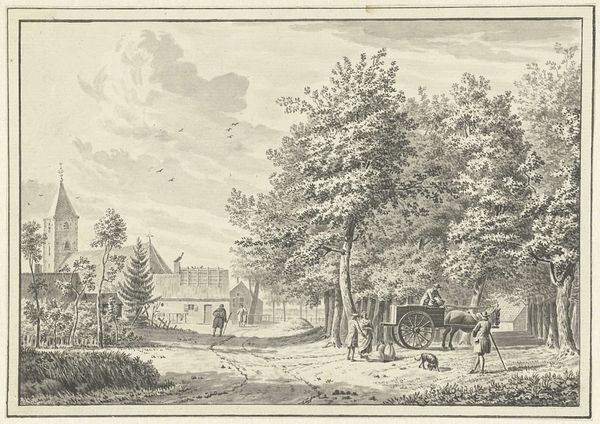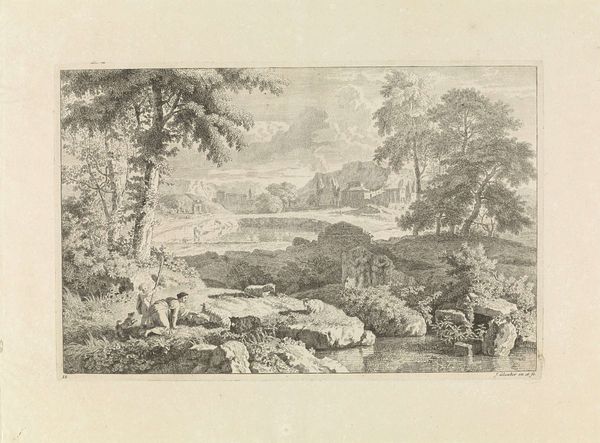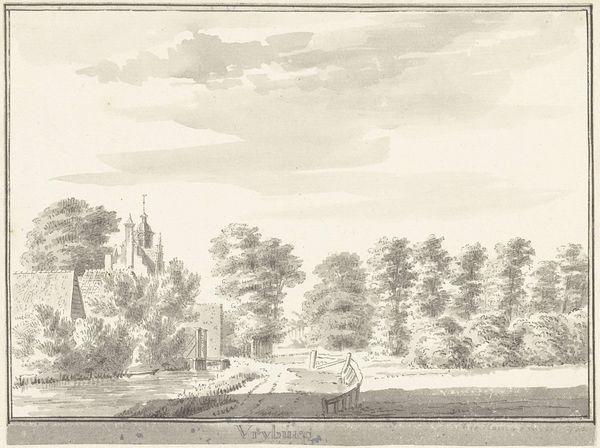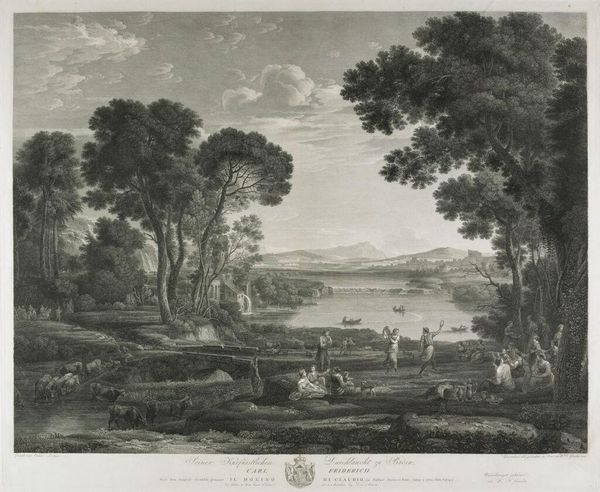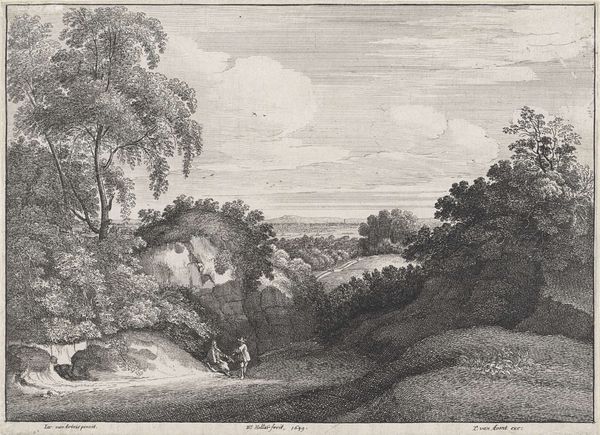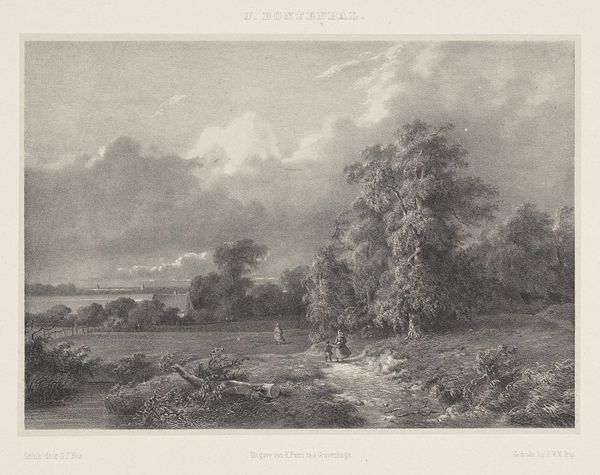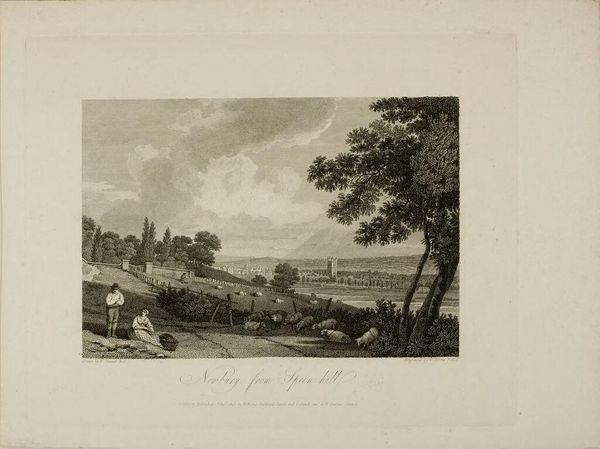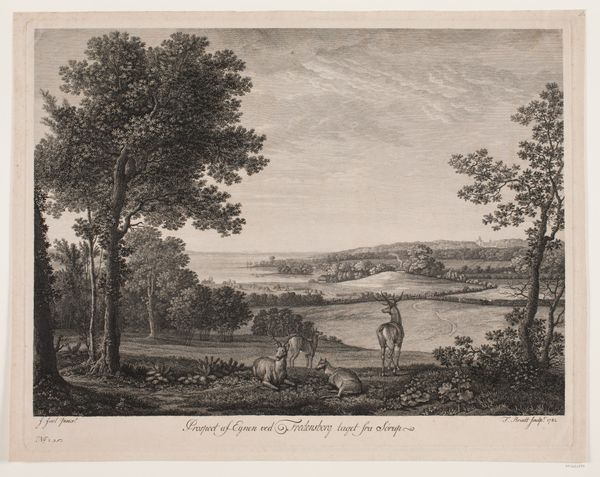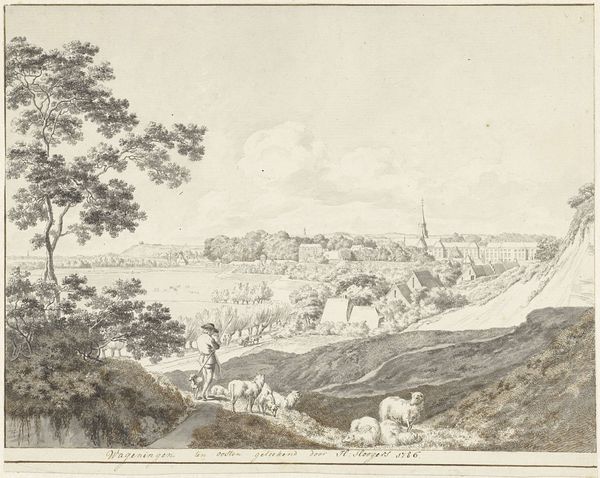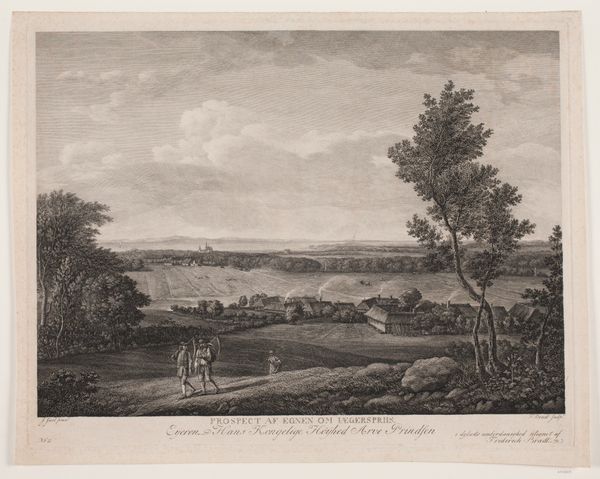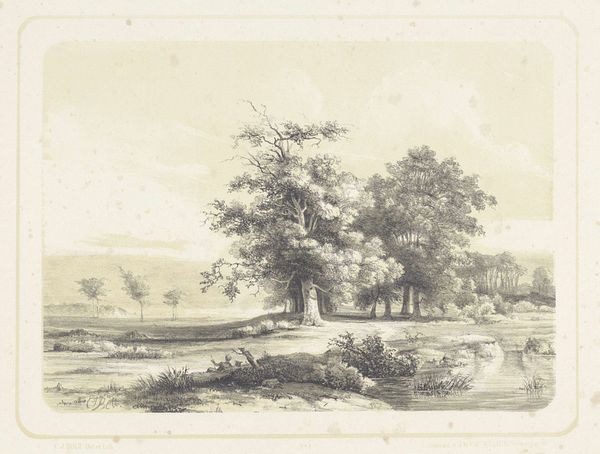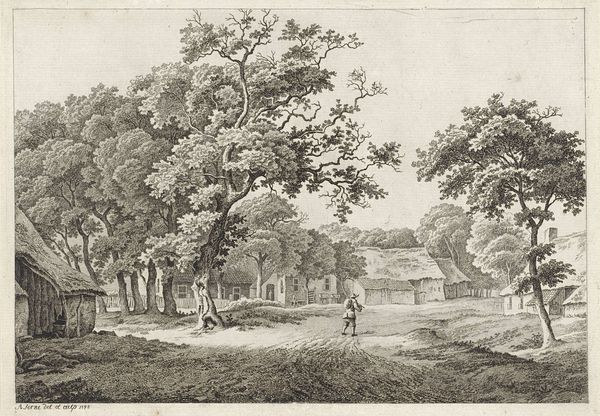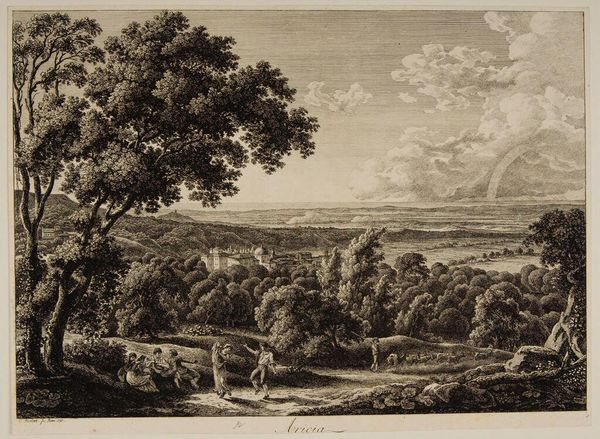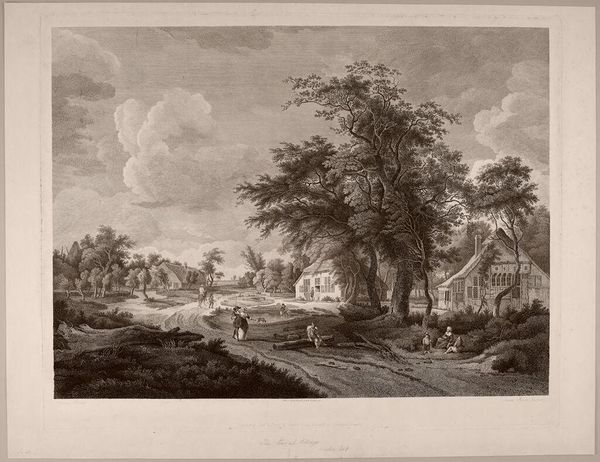
drawing, plein-air, pencil
#
drawing
#
plein-air
#
landscape
#
charcoal drawing
#
romanticism
#
pencil
Copyright: Public Domain: Artvee
Curator: I'm immediately struck by the moodiness, almost a sense of longing, emanating from this landscape. The silvery light filtering through the leaves is simply beautiful. Editor: We’re looking at “View from Altona overlooking the Elbe” by Christoffer Wilhelm Eckersberg, created around 1810. Eckersberg is a key figure in the Danish Golden Age, and this work, rendered in pencil and drawing, reflects an important aspect of the artistic production from that period. Notice the choice of media, and how it dictates our access to the image. Curator: It's remarkable how much detail he achieves with just pencil. The textures of the trees, the distant buildings, even the suggestion of wind on the water… you can almost feel the breeze. You could see the work as almost an "instruction" manual from an artist in how to observe carefully and accurately to create art. Editor: Absolutely. The material process is intrinsically tied to the broader artistic context, particularly during this era of growing nationalism. How did art depicting the land reinforce a certain kind of cultural and even political identity? One should see, however, the social role of Eckersberg, trained as court painter. His landscapes reflect Romanticism. Curator: Thinking about its display... the scale feels very intimate, so it perhaps originally was not intended for large exhibitions. It encourages a closer, more personal examination that reflects a sense of personal observation. The people are rendered small as if their scale could somehow mirror us today in an effort to engage our emotions, while simultaneously underscoring humankind's limited control over larger events. Editor: I’d agree that these natural depictions reflect larger societal concerns that museums must then address when showcasing images like this one. Also, how does our 21st-century perspective influence our emotional response when viewing what it could be argued, an aesthetic idealization of the territory? The image certainly doesn't touch upon other social realities present then. Curator: These visual pieces remind us how important the act of looking and the careful manipulation of available materials continues to be even today in the creative arts. Editor: The enduring appeal really rests upon its engagement with our socio-cultural pasts while provoking necessary questions on their visual legacies.
Comments
No comments
Be the first to comment and join the conversation on the ultimate creative platform.
